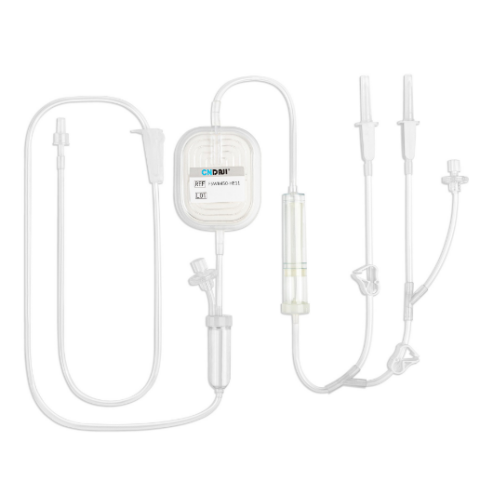What Are Bedside Leucocyte Reduction Filters for Red Blood Cells?
Bedside Leucocyte Reduction Filters for red blood cells (RBCs) are essential devices that enhance patient safety during blood transfusions. These filters effectively remove white blood cells (WBCs) and other harmful elements from RBCs, thereby reducing the risk of adverse transfusion reactions. This article explores the features, functionality, and benefits of various bedside filters available in the market in light of recent developments.
What Are Bedside Leucocyte Reduction Filters for Red Blood Cells?
Bedside Leucocyte Reduction filters for RBCs are specialized medical devices designed to minimize leukocyte (white blood cell) contamination in blood products. By removing WBCs, these filters assist in preventing immunological complications such as febrile non-hemolytic transfusion reactions (FNHTRs), alloimmunization, and the transmission of leukocyte-associated viruses.
Key Features of RBC Bedside Filters
Modern bedside filters incorporate distinct features catering to diverse clinical scenarios. These include:
1. Leukoreduction Capability
Filters adeptly eliminate leukocytes, ensuring safer transfusions.
2. Micron-Specific Filtration
Standard bedside filters possess a pore size of 200±20um, capable of trapping clots, cellular aggregates, and debris.
3. Ease of Use
Many models feature user-friendly designs, including pre-attached tubing, drip chambers, and rapid priming systems.
Importance of Blood Set Filters in Transfusions
All blood components, especially RBCs, require administration through tubing equipped with a filter. These filters serve pivotal roles in:
1. Preventing Micro-Emboli
They capture cellular aggregates and debris that could potentially obstruct microvasculature.
2. Enhancing Patient Safety
By filtering out clots and foreign particles, these devices significantly lower the risk of transfusion-related complications.
3. Adapting to Specialized Needs
Specialty filters are designed to meet the unique clinical requirements of patients, ensuring optimal outcomes.
Choosing the Right Bedside Filter
Healthcare providers must consider several factors when selecting a bedside filter for RBCs, including:
1. 100% Micro Aggregate Removal
While the standard size (200±20um) is suitable for most scenarios, specialized filters may be necessary for high-risk cases.
2. Compatibility
Filters should integrate seamlessly with existing transfusion setups, including storage bags and administration tubing.
3. Priming Efficiency
Quick-priming filters save crucial time in emergency situations.
4. Clinical Context
Considerations such as patient history, immunological status, and the type of blood product being transfused will influence the filter selection.
Advancements in Bedside Filter Technology
The field of bedside filtration continues to progress, with innovations aimed at enhancing efficiency, reducing costs, and improving patient safety. Today's filters feature:
- Improved Leukocyte Retention Rates
Advanced materials and designs ensure superior leukoreduction efficiency.
- Reduced Hemolysis Risk
Modern filters preserve the integrity of RBCs better, ensuring therapeutic effectiveness.
- Enhanced User Convenience
Compact, disposable designs simplify the transfusion process.
Clinical Benefits of Bedside Filters
The implementation of bedside filters offers numerous advantages, including:
1. Reduced Risk of Febrile Reactions
By eliminating leukocytes, filters significantly diminish inflammatory responses during transfusions.
2. Lowered Alloimmunization Incidence
WBC removal lessens the chance of antibody formation against donor antigens.
3. Improved Patient Outcomes
Fewer complications are linked to shorter hospital stays and enhanced recovery trajectories.
Technological Advancements in Bedside RBC Filters
The evolution of bedside RBC filters has benefited from modern medical technology, resulting in filters that are not only more efficient but also user-friendly and capable of higher filtration standards.
Smarter Filter Designs
New filter designs incorporate advanced features such as:
- Higher Filtration Capacity: State-of-the-art filters handle larger blood volumes more rapidly, making them particularly effective in emergencies.
- Multifunctional Filters: Some modern filters can remove white blood cells, platelets, and other cellular components, providing additional protection against transfusion complications.
Increased Biocompatibility
Recent advancements in materials science yield RBC filters that are highly biocompatible, minimizing the risk of allergic reactions or complications related to the filter material. Polymer-based membranes are frequently used because of their high degree of compatibility with blood.
Integration with Blood Transfusion Systems
Many of the latest bedside RBC filters are designed for seamless integration with automated blood transfusion systems, streamlining the entire transfusion workflow.
Conclusion
Bedside filters for RBCs are crucial tools in contemporary transfusion medicine, improving the safety and effectiveness of blood administration. Carefully selecting the appropriate filter is vital for optimal patient outcomes, highlighting the importance of precision in medical care.



Comments